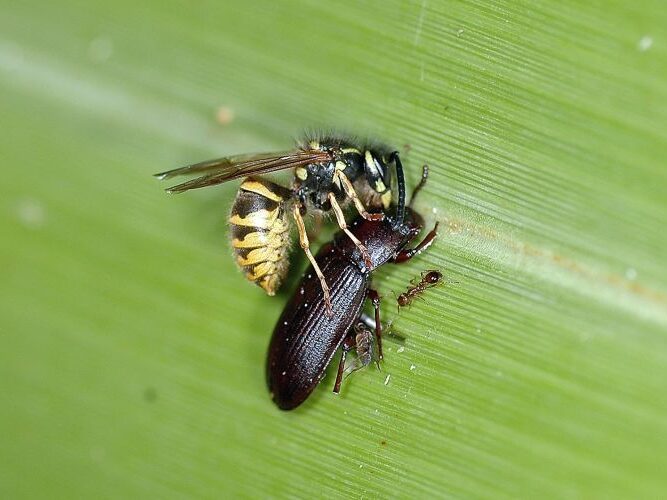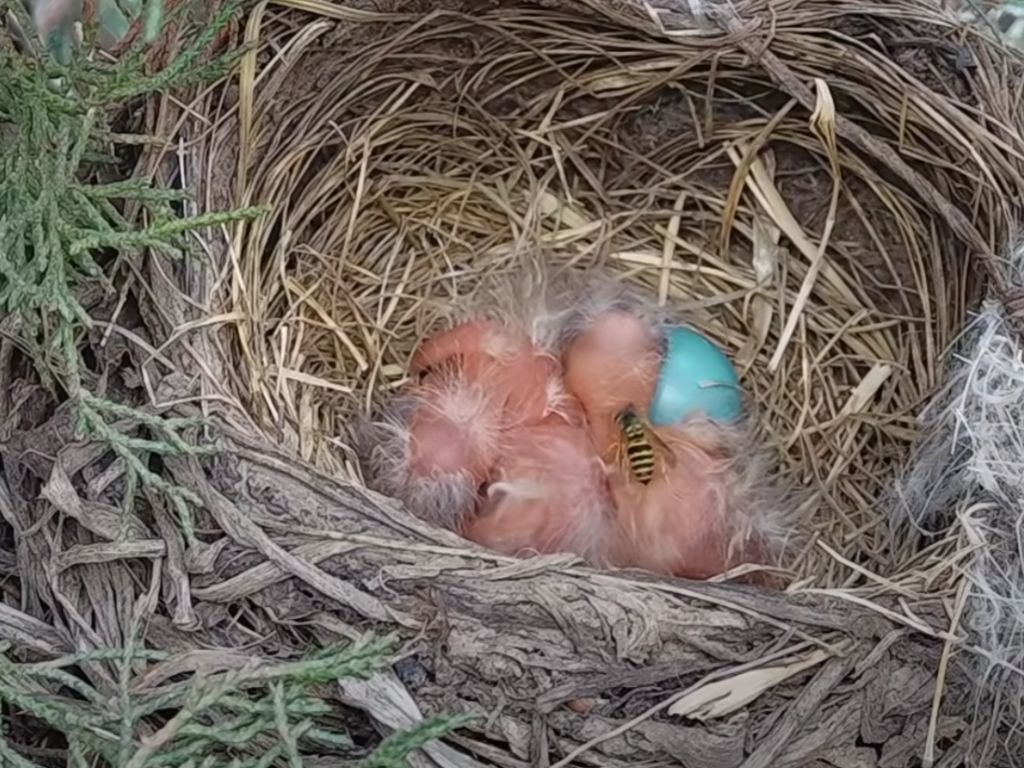When you think of “introduced predators”, what comes to mind? Probably feral cats, rats and stoats. Wasps are introduced predators too – and our mild climate and lack of natural predators mean these invasive insects are a big problem for Aotearoa.

1. Weighty wasps – in some forests, wasps weigh more than birds
The beech forests of the South Island have some of the highest wasp densities in the world. There can be up to 40 nests per hectare, with around 10,000 wasps in each.
If you weigh all the wasps in a forest, they’ll be heavier than all the birds, mustelids and rodents put together.
This huge biomass of wasps wreaks havoc on our ngahere (forest) – destroying insects and taking honeydew – a favourite food for manu like kākā and tūī.

2. A royal snooze – wasp queens hibernate over winter

The average wasp nest produces 1000-2000 queens a year.
In autumn, these queens flee the nest, mate and then hunker down for winter, when most wasp nests die.
While she’s sleeping, the queen keeps hold of the male’s sperm in a small sac called a spermatheca.
She then uses it to fertilise eggs for a new nest when she wakes up in the spring.
3. Takeaway only – adult wasps kill native insects but don’t eat them
Hunting wasps roam up to 1km from their nest, looking for nectar or insects.
When they find an insect, wasps kill it, but don’t eat it; instead, they chop it up, take them back to the nest and feed their larvae these butchered bugs.
Adult wasps then eat the sugary secretions from these larvae.

4. A sticky situation – wasps cost the economy more the $130m per year
A study by the Department of Conservation makes it clear that wasps are expensive. The biggest financial damage is through the disruption of pollinators like bees which hits the beekeeping and pastoral farming industries.
On top of the direct costs, almost $60 million a year is lost in unrealised honey production from beech forest honeydew which is currently being monopolised by wasps.
5. Buzzy builders – Kiwi wasps are world record-holders

With mild winters, plentiful food sources and nothing to eat them, wasps thrive in Aotearoa.
Working together, they can build sizable nests, made from chewed-up wood pulp mixed with wasp saliva.
The largest recorded wasp nest in the world was found at Waimauku, West Auckland in 1963, it was 3.7m high with a circumference of over 5m.
6. More than bugs: wasps kill birds
It’s not just insects that are on the menu. Researchers have seen wasps killing nesting birds, both in New Zealand and overseas.
Because wasps move so quickly and are so small, it’s really hard to detect this.
It’s likely that wasps kill chicks much more frequently than it is seen.

7. There are four species of introduced wasps in New Zealand
- German wasps (Vespula germanica), arrived in the 1940s, probably in crates of aircraft parts.
- Common wasps (Vespula vulgaris). A more recent addition to our environment, accidentally introduced on our shores sometime in the late 1970s or early 80s.
- Australian paper wasps (Polistes humilis), introduced in the 1880s to the northern North Island and are still only found north of about Tauranga to Te Kuiti.
- Asian paper wasps (Polistes chinensis) arrived in NZ in the late 1970s, these slender insects mainly feed on caterpillars.
Dealing to wasps

If you’ve got a wasp problem at your place, there are three options: find a pest control professional in your area, destroy the nest yourself or use bait stations.
To destroy a nest, you first need to find it – which can be tricky. Follow the trail of wasps at dusk when the low light highlights their path. Then, on a dry night, use an insecticide puffer on the nest entrance. If you can’t find the nest, insecticide bait stations are another option.
These products are available at your local hardware store, and Manaaki Whenua has a great guide to wasp control.
For wasp control on a landscape scale, the best practice is to use a protein-based wasp bait called Vespex. This can be paired with a trapping network and serviced simultaneously.

